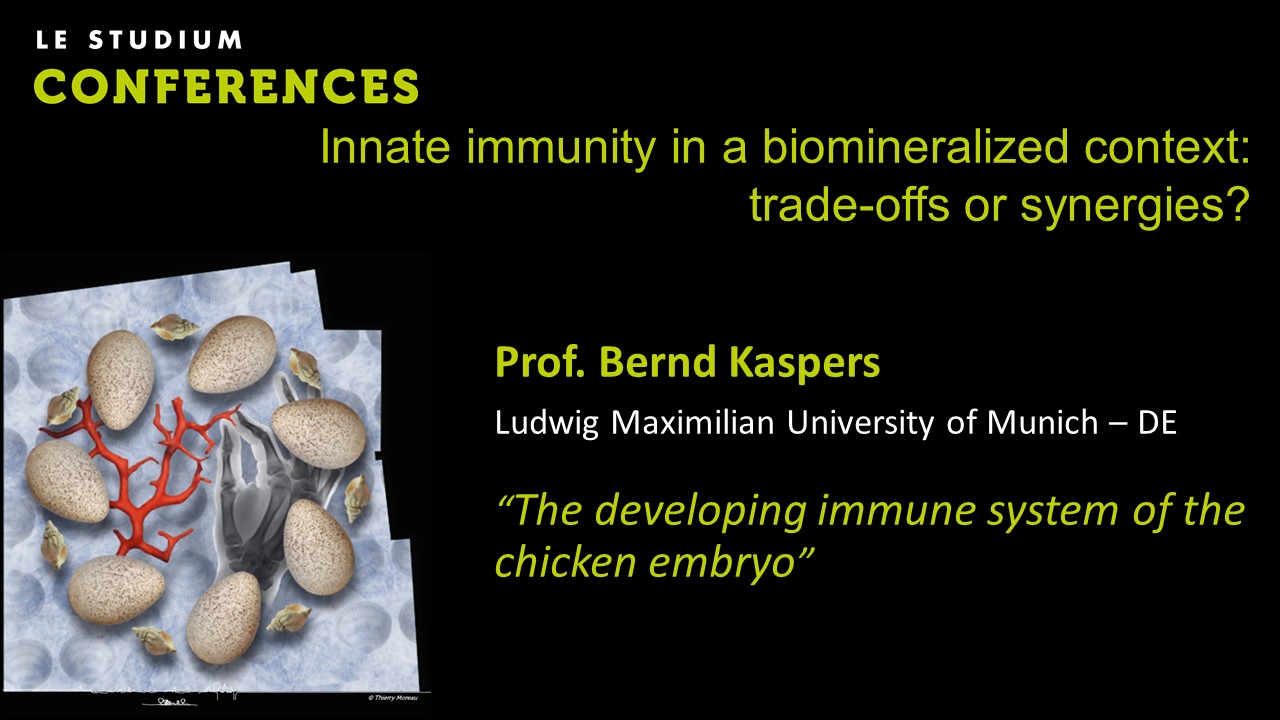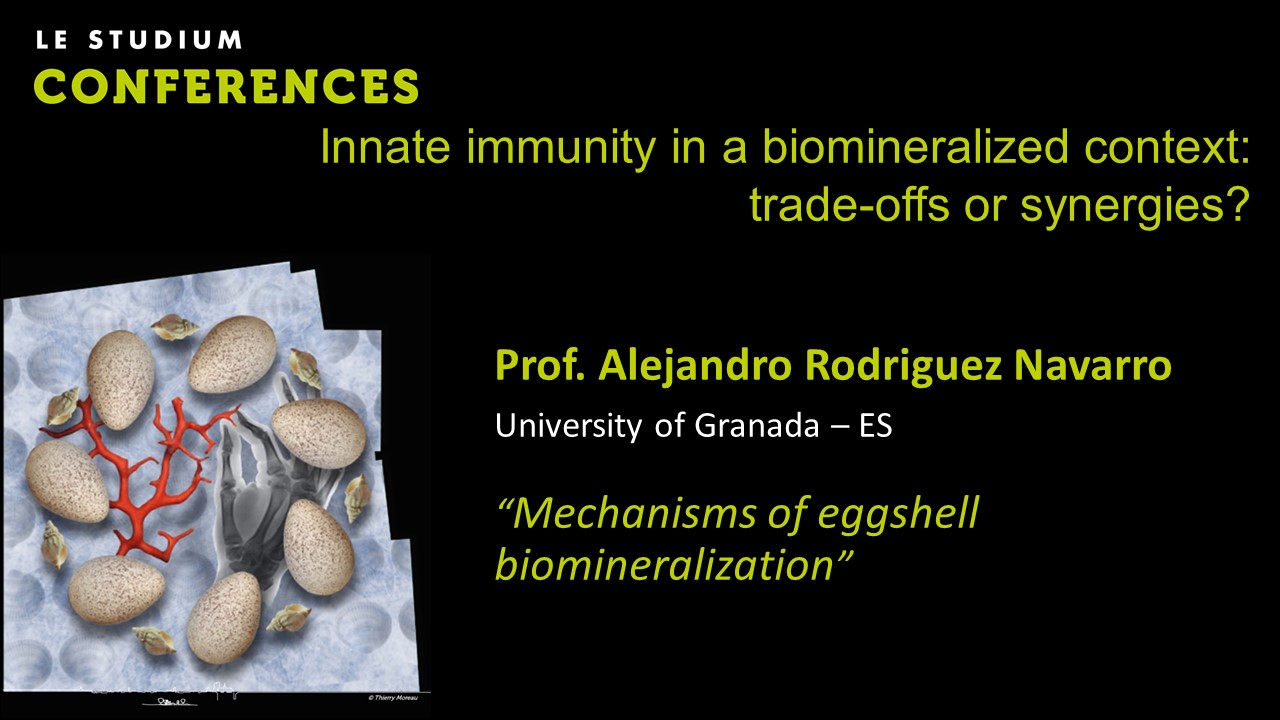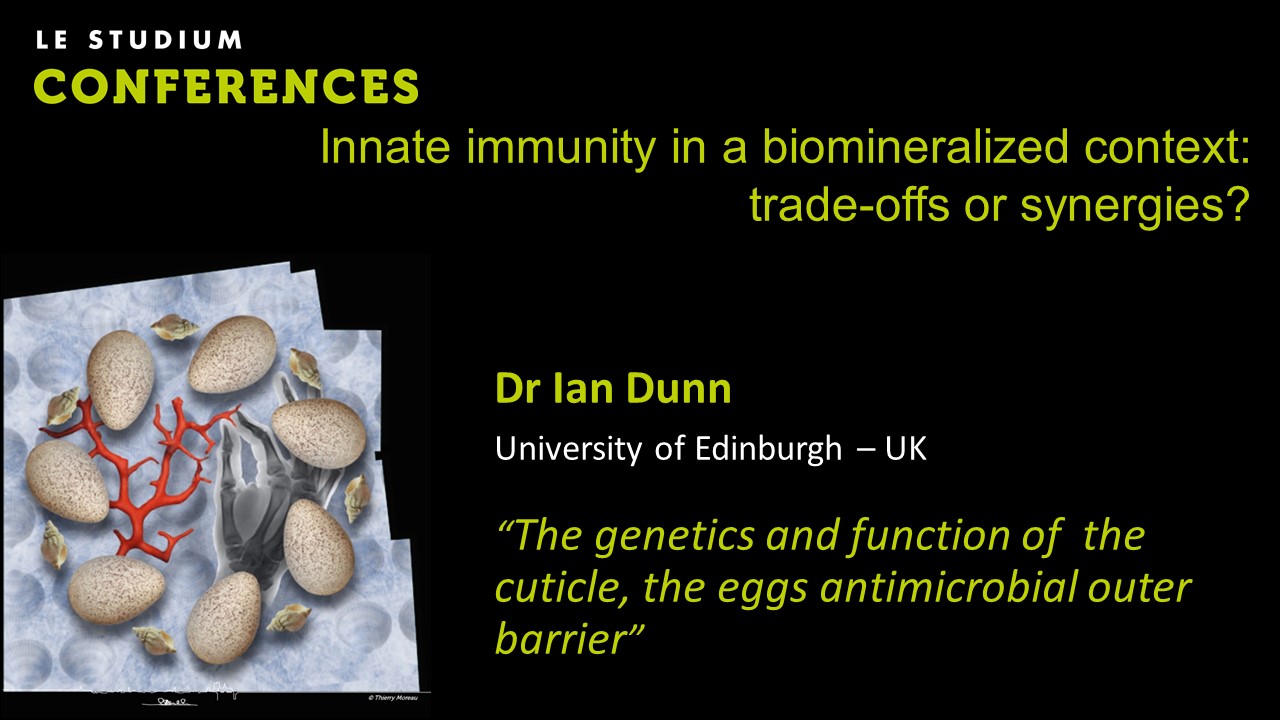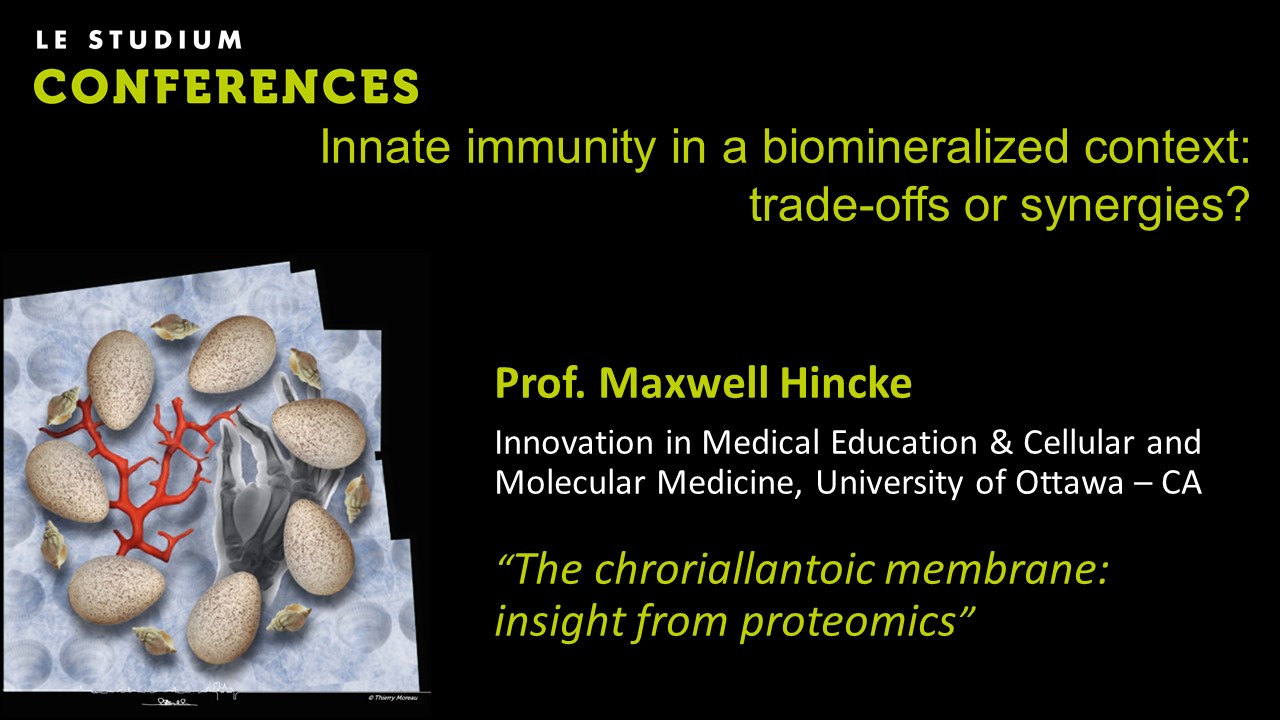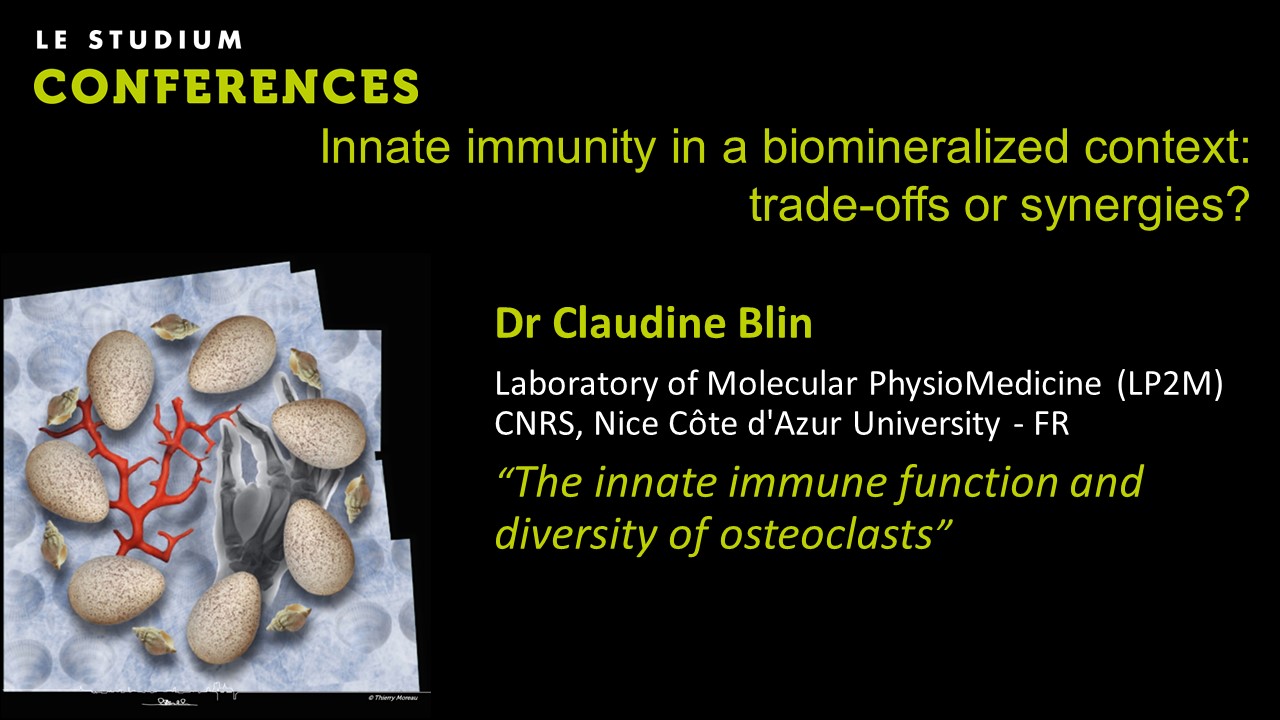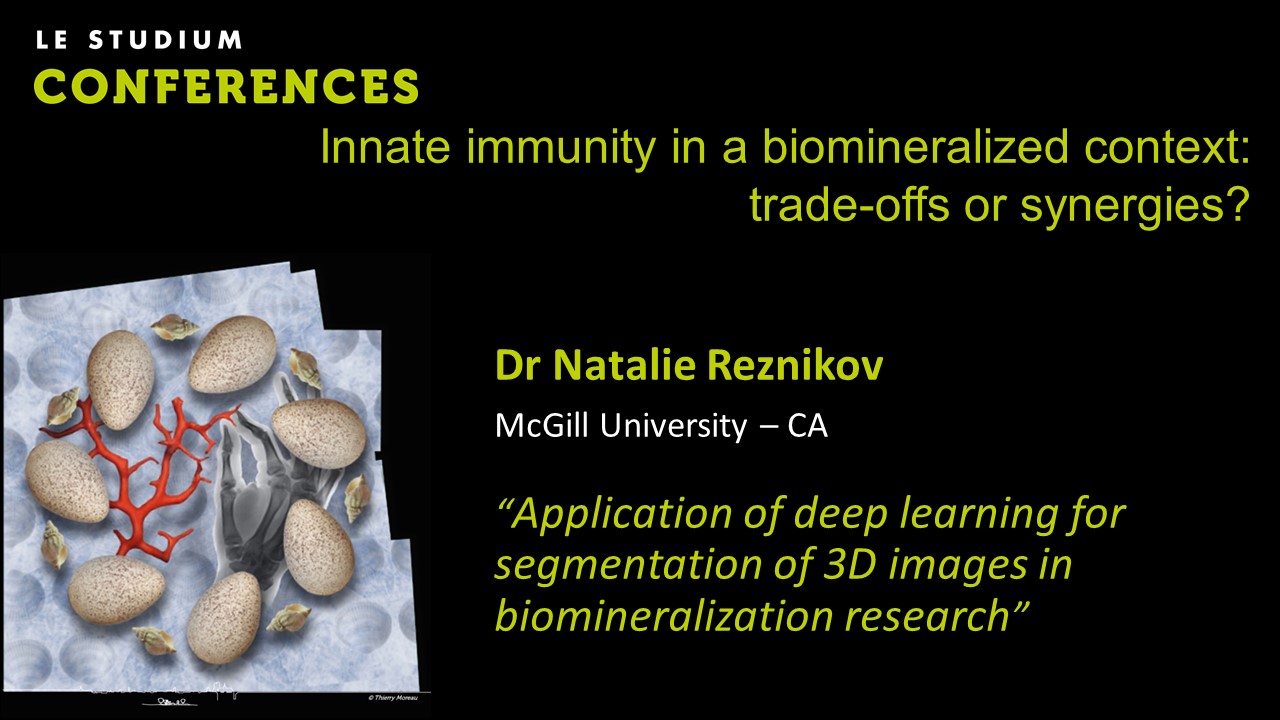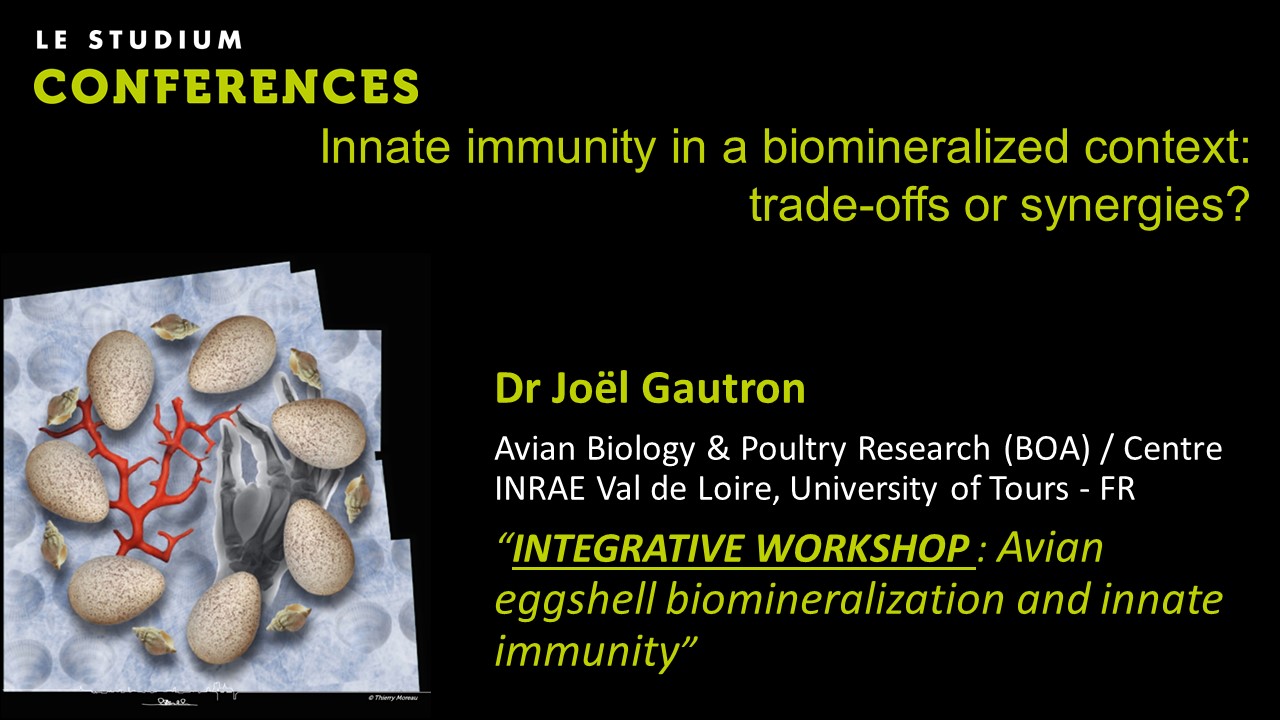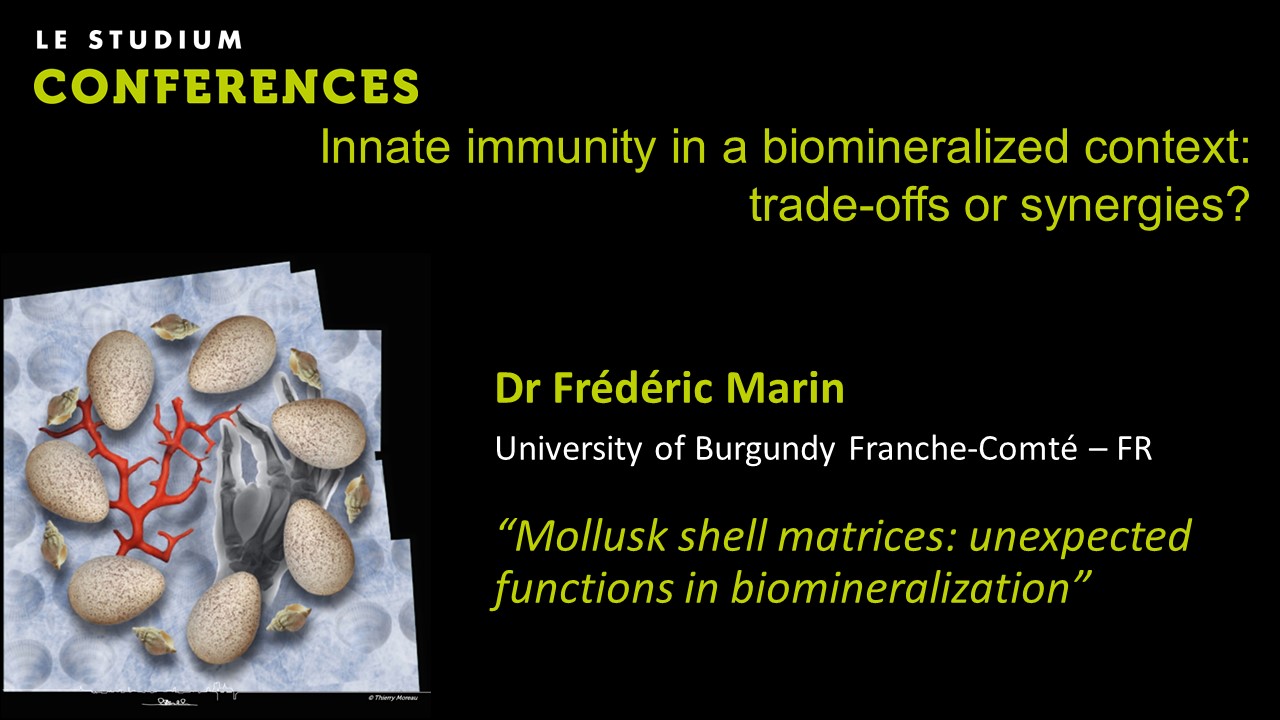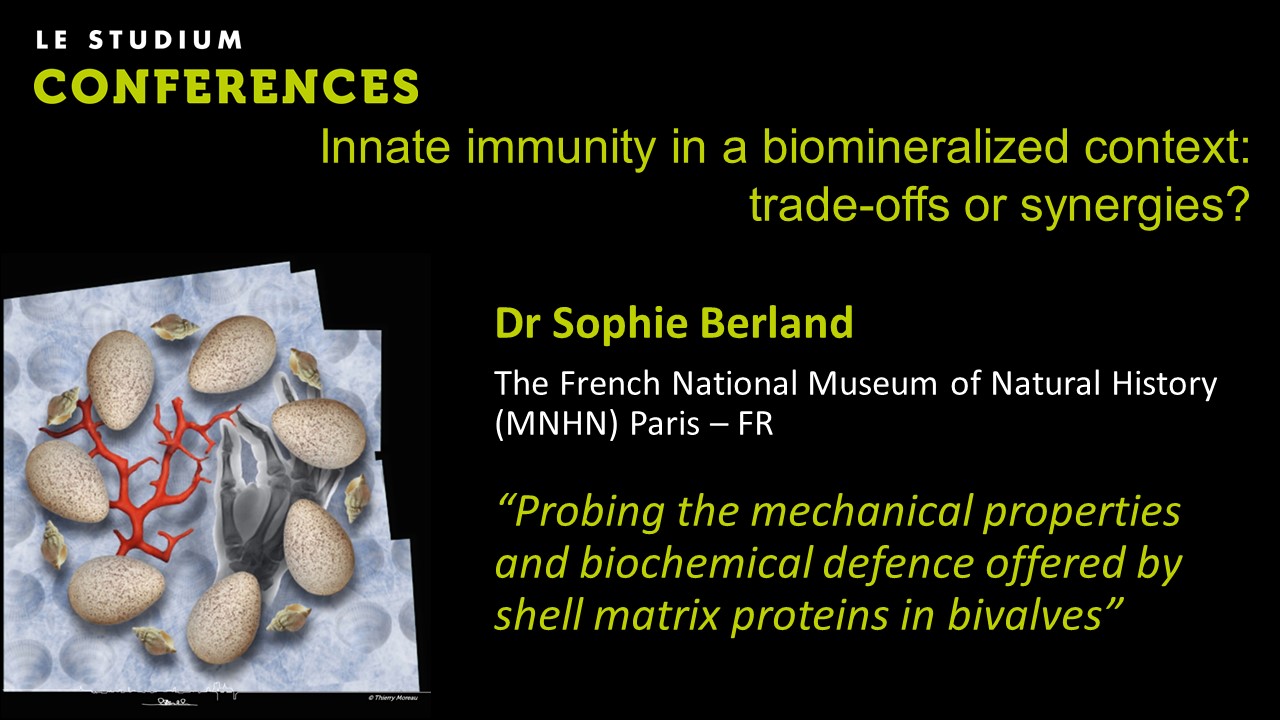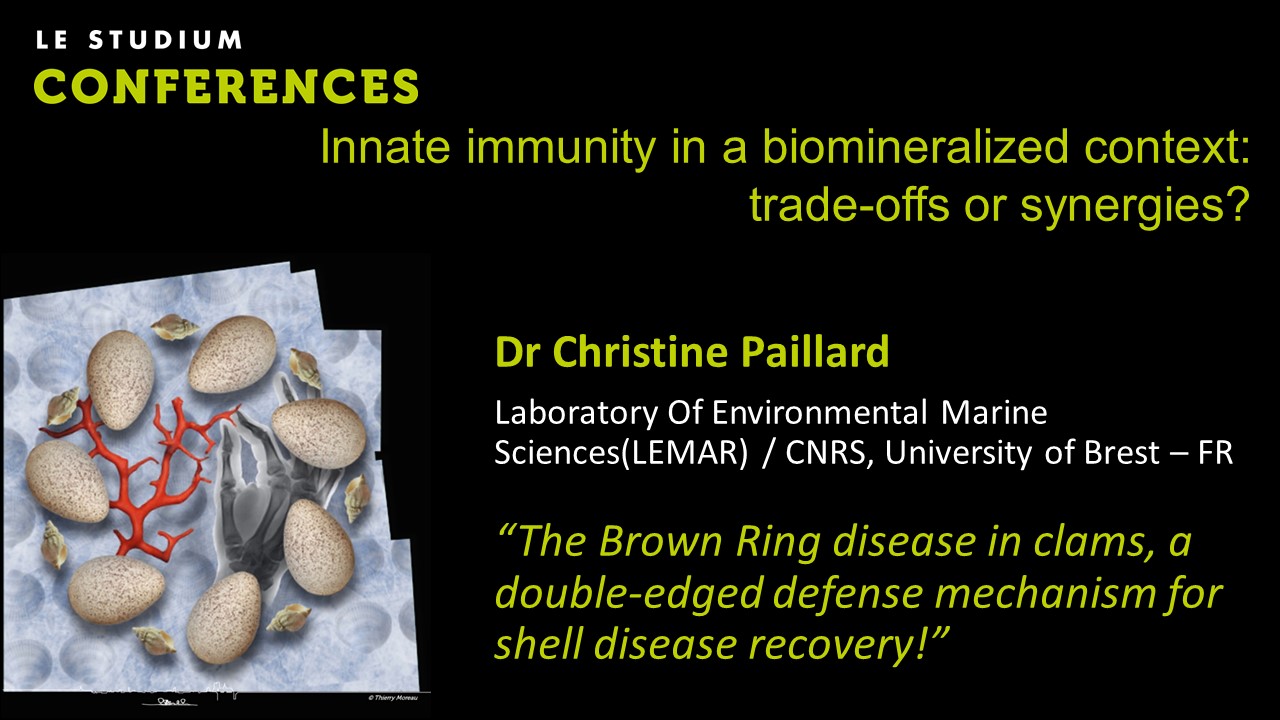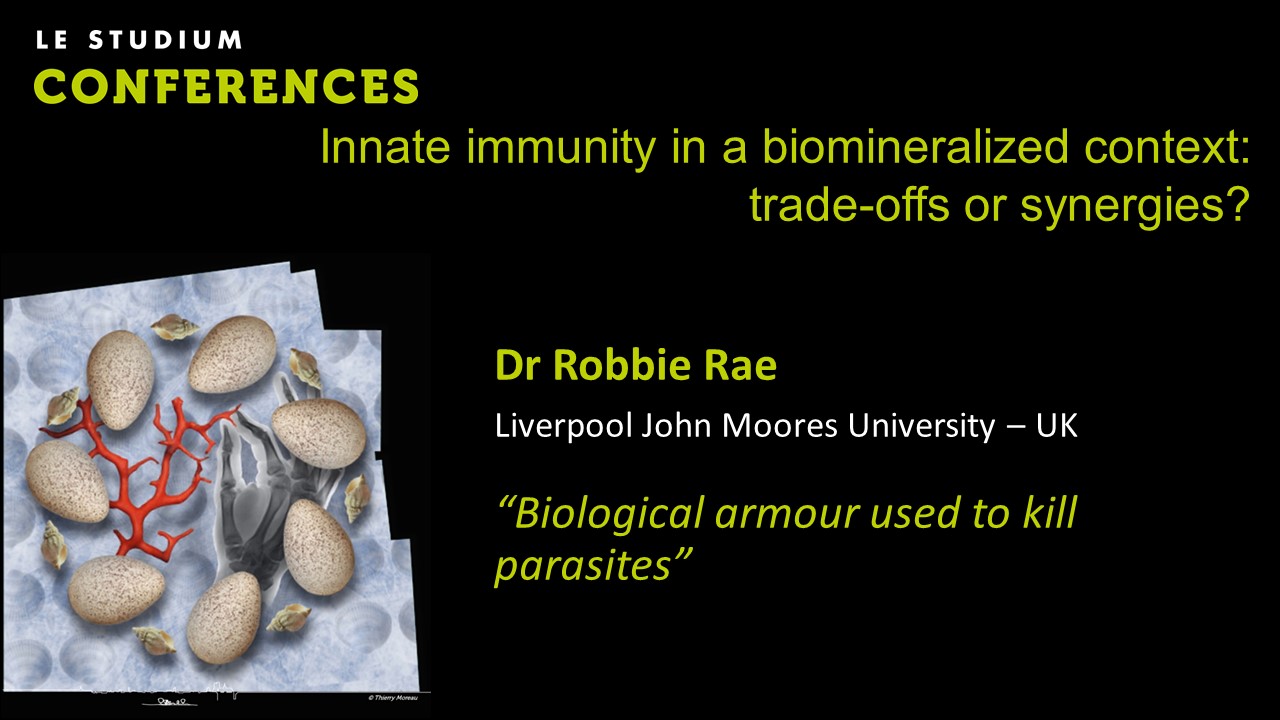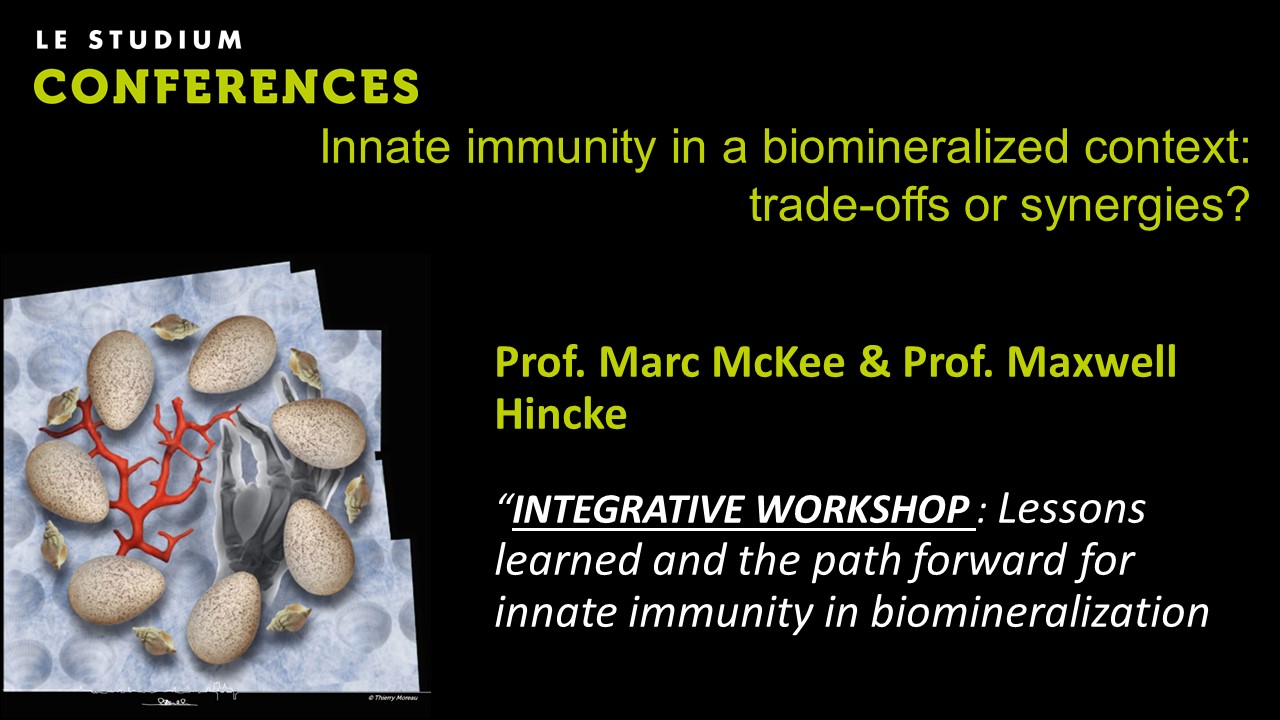Innate immunity in a biomineralized context: trade-offs or synergies?

Descriptif
Biomineralized structures can function as a barrier to the external environment, and as such are conceptually entwined with innate immune processes. Disentangling immune and biomineralization mechanisms represents a significant challenge for researchers trying to understand how organisms could integrate biomineral formation and plasticity with maintenance of critical innate immune protection. In fact, there is increasing evidence that immune proteins can serve genuine dual-functional roles, both in regulation of biomineralization, as well as resisting pathogens. This awareness is growing in models as diverse as the dual-functionning haemocytes of marine bivalves, and in mineralization / demineralization of the avian eggshell. Moreover, reef corals, in which calcification is coupled to the photosynthetic activity of their mutualistic symbiots, must adapt their innate immune system to achieve this tolerance. Cnidarian immune-related processes in response to abiotic stresses are increasingly implicated in loss of symbiosis and coral bleaching.
This conference aims to bring together scientists working with diverse models of biomineralization, for an exchange of perspectives on the innate immune function of the calcified barrier and the dual role played by specific genes / proteins in these two critical functions.
Read more : http://www.lestudium-ias.com/event/innate-immunity-biomineralized-context-trade-offs-synergies
Vidéos
Prof. Bernd Kaspers - The developing immune system of the chicken embryo
Development of hematopoietic cells has been investigated intensively in the chicken embryo. Early hematopoietic stem cells develop in the aortic region and seed to primary lymphoid organs where
Prof. Marc McKee - The structure of avian (chicken) eggshell
The functional properties of biomineralized structures found in Nature result from interactions between their hybrid components – both organic (mostly proteins) and inorganic (mineral) phases – to
Prof. Alejandro Rodriguez Navarro - Mechanisms of eggshell biomineralization
The avian eggshell is a thin mineral layer (350 µm thick in chicken) that protects the egg content against mechanical impacts, dehydration and microorganism contamination. Eggshell formation is a
Dr Liliana D’Alba - Eggshell mineralization in relation to nesting ecology in reptiles
Egg morphology is essential for animal survival, mediating the interactions between embryos and their environment, and a result have evolved into an enormous diversity of forms and functions in
Dr Sophie Réhault-Godbert - The eggshell microbiome
Avian eggs possess very efficient and orchestrated systems to protect the embryo during incubation, until hatch. Although the internal components of the egg are assumed to be sterile, the surface
Dr Ian Dunn - The genetics and function of the cuticle, the eggs antimicrobial outer barrier.
Avian eggs have a proteinaceous cuticle covering the outside of the eggshell forming a barrier to the transmission of microorganisms. Although the cuticle is similar to the organic matrix, its
Prof. Maxwell Hincke - The chroriallantoic membrane: insight from proteomics.
In oviparous animals such as birds, embryonic development occurs in the egg; after oviposition, there is no further possibility of material exchange from the hen to fulfill the physiological needs
Dr Nicolas Guyot - Phylogenetic and structural evolution of egg antimicrobial proteins and peptides
The avian egg is designed to support the autonomous development of the chick embryo in the outside environment. It initially contains all the nutrients required for embryonic growth and provides
Dr Claudine Blin - The innate immune function and diversity of osteoclasts
Osteoclasts are the cells responsible for bone resorption in steady state and bone destruction in chronic inflammatory diseases and osteoporosis. Up to recently, they have been considered only as
Dr Natalie Reznikov - Application of deep learning for segmentation of 3D images in biomineralizati…
Modern 3D imaging methods in biomineralization – such as X-ray tomography and dual-beam electron tomography – produce datasets that are rich in fine detail and enormous in size, often containing
Dr Frédéric Marin - Mollusk shell matrices: unexpected functions in biomineralization
To construct their skeletons, all metazoans secrete a complex array of macromolecules that are supposed to display key-functions in biomineralization, such as crystal nucleation and crystal growth
Dr Sophie Berland - Probing the mechanical properties and biochemical defence offered by shell matr…
Calcium carbonate is paired up with shell matrix proteins in the suited organo-mineral outer shell in molluscs. Advanced knowledge in the shell proteome is achieved with the development of
Dr Christine Paillard - The Brown Ring disease in clams, a double-edged defense mechanism for shell…
Brown Ring disease is caused by Vibrio tapetis, which, by adhering to newly secreted shell matrices, interferes with the biomineralization process. Colonization and alteration of the matrices induce
Dr Robbie Rae - Biological armour used to kill parasites
The co-evolution of parasites and hosts has shaped the immune system. One such ‘arms race’ is between parasitic nematodes and their molluscan hosts. One such species (Phasmarhabditis hermaphrodita)

